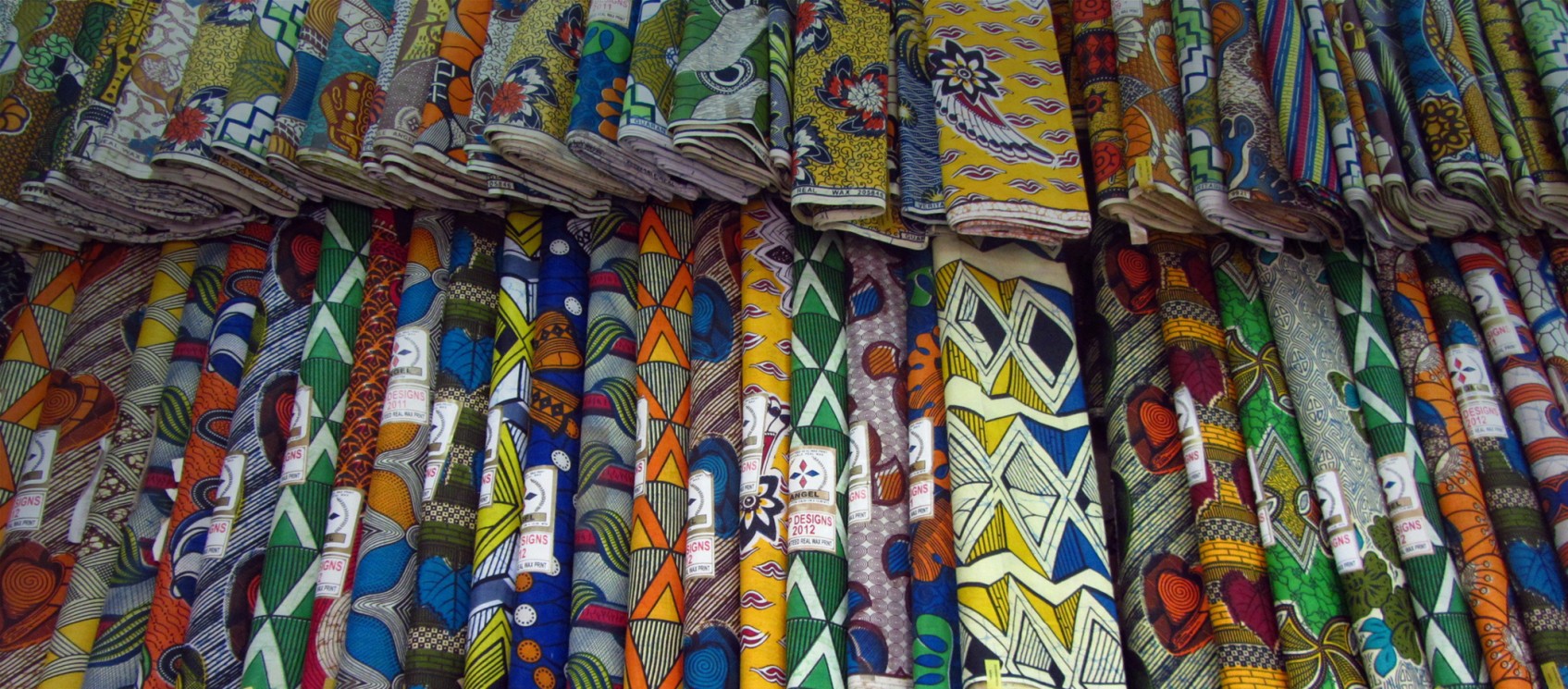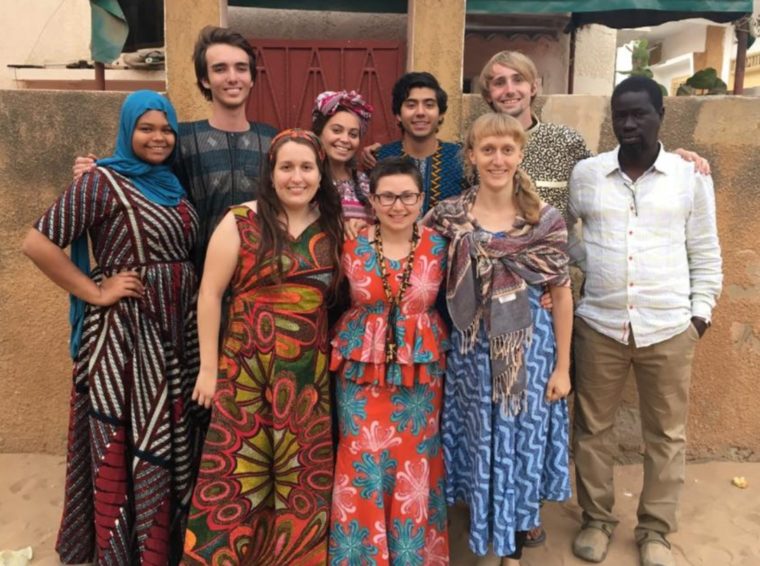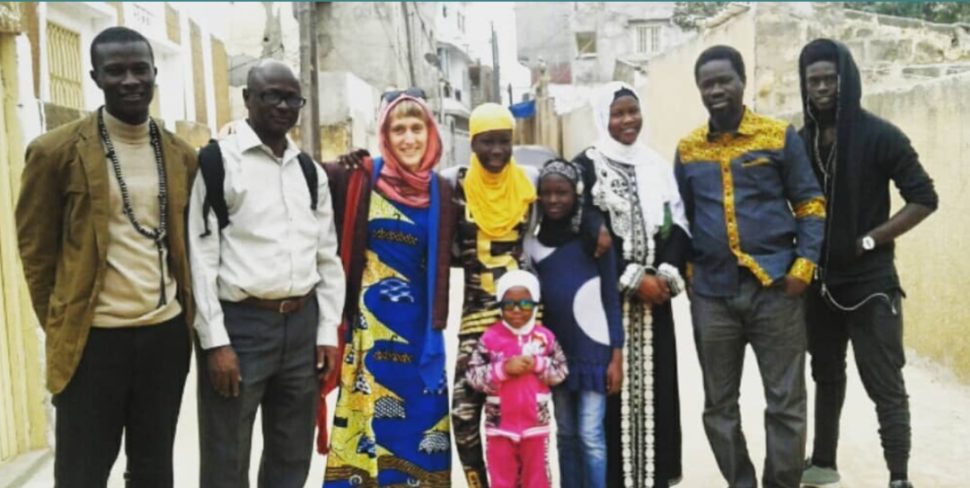The Nuance of What to Wear While Traveling – A “Dressay”
Posted on
04/26/22
Author
Jenny Wagner
After five years of being a foreigner living in Dakar, Senegal, I think I’ve finally figured out how to dress. Today I’m wearing my favorite pair of form-fitting gray jeans, a black t-shirt, and a knee-length burgundy cardigan with no buttons. It’s 73 degrees Fahrenheit today, which honestly feels a bit chilly to me since my body has adapted to this warmer climate. This evening, when it’s time to break the Ramadan fast, I’ll upgrade my outfit with a knee-length kurta over my jeans and cover my hair with a light scarf.
We make many tiny assumptions about people daily because of their clothes based on our own cultural references — their beliefs, their lifestyle, their socioeconomic status, their value. In a foreign context, clothes sometimes hold new and unfamiliar meanings.
For years I perplexed my Senegalese friends with my fashion choices. I showed up to chic restaurants wearing wax-print wrap skirts that maids generally wear while doing housework. And, like a grown-up wearing a Hello Kitty backpack to work, I wore my headscarf in a style only middle school girls use. These days I know more about how to calibrate my fashion statements so that they mean what I’m hoping they mean (Sexy? Flirty? Casual? Professional?). As a white foreign woman in my 30’s, I also understand the assumptions people might make about me and how this can impact the way others read what I’m wearing. It has taken me five years to arrive at this level of understanding, mostly thanks to some honest fashion interventions from Senegalese friends who weren’t afraid to offend me.
Although I’m an American national (and grew up in Boulder, CO), I have residency in Senegal and no longer consider myself a “visitor” here. People in my neighborhood know who I am, the details about my story, and what my place is in our community. As my Wolof has improved, so has my ability to distinguish the messages others communicate — and that I communicate to others — through my clothing choices. I know what to wear to a naming ceremony, the office, the beach, the gym and a girl’s night out. I know many aspects of what clothing choices here say about age, class, religion, occupation, political beliefs, and values.
Occasionally, as a part of my work in the Dragons office, I am asked to provide suggested edits to our student packing list for Senegal. I always struggle with this task, because “how to dress” in a foreign country is so much more subtle and complex than a packing list can communicate.
At Dragons, our mission is to cultivate meaningful connections through immersive and responsible travel. How we dress on our programs supports this mission in a big way. It’s also a very sensitive topic for many people and brings up charged topics like class warfare, cultural appropriation, colonialism, sexual violence, and the patriarchy. Too often, conversations on this topic revolve around women. In our experience, while gender presentation is definitely a factor in how people might respond to certain clothing choices, all of our best practices for how to dress abroad apply to people of any gender.
I reached out for help to our Dragons instructor community for guidance on how to approach this subject, and I want to acknowledge that what follows is woven from contributions and ideas shared by Hanna Jacobsen, Teto Morales, Maddie Melton, Berta Gielge, Dave Haffeman, Kristen Gianaris, Anna McKeon, Claire Bennett, Ellery Rosin, and the Dragons JEDI Committee.
Why Dragons Dress the Way We Do
Students sometimes ask us why the recommendations we give them for dressing might be different from (and often more conservative or formal than) what they see some local young people wearing. There are so many dimensions to this!
You might not be saying what you mean to say. Think about the places you grew up. What are the different clothing styles you might counter? Where do they come from? “What do you hope to communicate to others through your physical appearance? Do others always perceive you the way you hope?”
Short shorts or ripped jeans on local teenagers may be seen as young people pushing the envelope and boundaries of their own society. These young people know what they’re communicating with their clothing choices and why. The same clothes on foreign teenagers could be interpreted quite differently (example: culturally insensitive outsiders continuing the legacy of colonialism by importing foreign values and corrupting local youth). You might not agree with this interpretation, but it’s important to understand that it may impact the level of cultural access you’re afforded as a visitor. As Berta Gielge (Senegal instructor) explains it:
“Clothes are a cultural language. You have a right to use your language, and your language is not wrong or worse than any other. But if you address people in your own language in a foreign country, there are likely to be some misunderstandings. When you first learn a language, you just repeat words and phrases. It is once you master the meanings that you will start to express yourself, and the more vocabulary and nuances you get to know, the more you can express your “true self” in that language. It is like that with clothing codes. When you are new somewhere, you copy the “standards”. With time, you might find ways to dress in a style in which you can 1) feel comfortable, 2) feel like yourself, and 3) communicate the message that you want to communicate to your surroundings.”
You may not understand how your clothing choices fit the context. Imagine an outfit in your own culture that you may feel uncomfortable wearing in certain contexts. Personally, I wouldn’t feel comfortable wearing a swimsuit in the grocery store. Where I’m from, a swimsuit isn’t usually an appropriate thing to wear grocery shopping, and if I wore one I imagine I would have to deal with stares, comments, jokes, and even potentially being asked to leave and come back once I’m dressed more appropriately. Consider the possibility that your favorite summer outfit from home may be the equivalent of a swimsuit in the place you’re visiting.
In every culture, there are outfits that aren’t appropriate for certain situations. In our experience, it’s almost always better to be overdressed than underdressed. This is not only true for obvious situations like a formal visit with tribal elders or stepping into a sacred cathedral, but also for everyday situations such as going to the market or walking around town. We usually advise students to wear clothes that are appropriate for most day-to-day situations, and to also pack at least one outfit that they could wear to a religious site or a more formal situation.
Dragons groups are invited into very sensitive spaces, including religious celebrations and sacred ceremonies that aren’t generally open to outsiders. Dragons instructors can help guide you to understand when and where certain clothing choices are appropriate— if you’re doing lots in a day, you may want to dress for your most formal event.
As an outsider, the way you dress can communicate respect to your hosts. Being good guests is essential to the ethos of how we travel, and sometimes that means adapting our behaviors. Claire Bennett (Nepal instructor) shares her thoughts on this topic:
“Conforming to cultural norms that are not one’s own can be challenging for many students, as it can often feel like they are being forced to accept values that are not their own. This is not the case – you will never be asked to change your values as part of the program. You will, however, be asked to challenge your assumptions and withhold judgment when encountering different cultural expectations and practices. We encourage you to take your time to understand and assess the culture without initially judging it, in order to build relationships with people who think differently from you rather than instantly putting up walls. Ultimately we want to ensure that no-one is made to feel uncomfortable in their own community, remembering that traveling to the amazing places that we go to is a privilege; one that we hope will also be extended for others.”
Dress can be tied to historical power dynamics between you and your hosts. In the words of Teto Morales (Guatemala instructor):
“As humans, we can choose how we talk, behave, interact, dress etc. and we are free to do so in whatever way we want; however, some of the choices we do have an impact in other people that can be at some point not right, especially when this form is not part of a culture that we interact with. This exactly is what happens in some of the communities we as Dragons work and live with. Talking about the specific context in Guatemala, our people have been oppressed and imposed ideas from the exterior since the beginning of our modern history. These ideas have been with them since then and the lack of opportunities to explore new things are almost forbidden in terms of mostly religion and lack of education too. One of the only things that remains with them is their Mayan heritage and here dressing is really important. Dressing is one of the only few things Mayan (indigenous people) preserve and Spanish conquerors could not take away from them. This and the conservative ideas from Christianism have made our people a bit skeptical to take new ideas from the “new” world. One thing that I really appreciate about working with an organization like Dragons is that the majority of our students come to these programs with the idea of immerse themselves in a new culture, this includes this culture customs and traditions; this is mostly why they learn from the beginning how to interact and properly dress without any problems, I have never had a problem addressing this and students always take the advice and history behind this that we share.”
These host/guest power dynamics are perhaps even more important for our programs in the US. When we first launched our domestic programming, it was easy to assume at first that the packing list would not have the same cultural importance as they do for our international programs. We quickly realized that as an organization from the dominant US culture visiting a range of historically marginalized communities, showing respect via culturally appropriate clothing choices was a huge part of showing respect to and maintaining trust with our US-based community partners. Instructor Maddie Melton (US and China instructor) shares their experience supporting students to engage with conservative partner organizations in the US:
“The biggest difference [on US programs] is that students perhaps feel more “right” to challenge norms in the US and less tolerance for just accepting that it’s part of ‘local culture.’ They see it as part of an oppressive framework in their own backyard that it is their right, or even responsibility, to push back against. You can say that your right to expression is the most important thing to you. And that’s your choice and certainly an understandable one. But the trade-off is that you’re going to cut yourself off from communities that feel differently. You’re not going to have the same opportunities for learning from people who are different than you. But you probably can’t have it both ways— the choice that is not an option is to expect meaningful engagement with others while simultaneously insisting that their community norms are immoral or oppressive.”
You may not be emotionally prepared for the reactions your clothing choices might elicit. At home, you can probably imagine the types of reactions certain outfits might elicit from others and dress according to your own mood and preferences. Depending on where you are traveling, dressing in ways that expose certain parts of your body may elicit unexpected reactions, such as unwanted comments or looks. We don’t think people should ever feel guilty or responsible for this kind of attention, but we encourage you to reflect on whether you are emotionally prepared to deal with it.
Does this mean you should never wear clothes that reveal “culturally inappropriate” parts of your body while traveling? Not necessarily. You might be ready to wear those clothes if you feel emotionally prepared for the responses you might receive, and have the language skills and confidence to respond as needed. As Hanna Jacobsen ( Latin America instructor) shares:
“The reality of being in a country with a lot of machismo where there are really different impressions of what’s appropriate. It does become a choice as to how you can deal with things. The communities my students were based in, it’s super safe, lots of men on the street, you get a lot of looks, a lot of comments. For someone who’s lived here for a while who can speak the language, can say some things back, or ignore it, doesn’t ruffle my feathers in the way it might shock a student of being addressed by someone who might be their father’s age.”
No matter how you dress, as a traveler you are a potential target for harassment or crimes. Past Dragons students often share feedback on the importance of packing “nice, regular clothes,” so that you’re not always wearing the identity of a tourist. Be aware that drawing additional attention to yourself (especially as a foreigner) can make you more of a target. As a new arrival in the country, you probably aren’t emotionally or linguistically prepared to respond to these situations. Dragons instructors tend to advise students to dress in ways that won’t elicit any extra or unwanted attention because in most cases, this adds a layer of physical safety and emotional comfort that supports a positive learning experience. While victims of harassment or crime are never responsible for inappropriate actions directed toward them, the truth is that our clothing choices can and do impact how others behave towards us. Teto Morales (Guatemala instructor) shares: “I always let students know that we will be seen differently because despite always saying we all are the same, we do look different, especially in small communities. If we look different, dressing properly can diminish being targeted in a bad way.”
It’s not actually about you. The main reason we tend to advise you to dress in ways that might be more conservative or formal than what you are used to at home actually has nothing to do with you, and everything to do with our deep respect for and commitment to the communities and organizations who host us. As Anna McKeon (Southeast Asia instructor) explains it:
“In the dominant culture of the US, and some other industrialized nations, the cultural unit is that of the individual. It’s all very Descartes ‘I think therefore I am’ – the whole way you think about the world is through the individual. So self expression is a big deal. In many other countries and in non-dominant communities in the US, the cultural unit is not the individual, it’s the community. We are seen and shaped by those others we spend time with. So how we dress is not just about some simplified notions of modesty or patriarchy – yes, those concepts can be involved, but before that, it’s about the importance (or not) of the self. For students, the challenge is first to realize that the cultural challenge is about changing from an individual focused mindset – basically it’s not about them! It’s about other people! If a culture places an importance on dressing modestly or in a certain way, if you choose to challenge that, you are likely to make the person or people you are interacting with feel uncomfortable. If you want to have a positive interaction with those people then you need to stop placing more value on your expression of individual self, and more on them and their community.”
Dressing like a traveler, not a tourist. Past Dragons students often share feedback on the importance of packing “nice, regular clothes,” so that you’re not always wearing the identity of a tourist. Wearing clothes that express who you are can make you feel more like yourself and make you feel more at home in a place.
Do you have any comments, thoughts, or wisdom to share on best practices for how to dress while traveling and interacting with different communities? We’d love to hear from you in the comments!








Leave a Comment